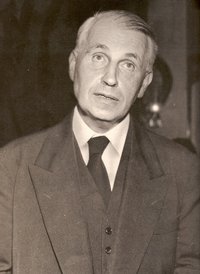
Georges Bataille (1931)
It is clear that the world is purely parodic, in other words, that each thing seen is the parody of another, or is the same thing in a deceptive form.
Ever since sentences started to circulate in brains devoted to reflection, an effort at total identification has been made, because with the aid of a copula each sentence ties one thing to another; all things would be visibly connected if one could discover at a single glance and in its totality the tracings of Ariadne’s thread leading thought into its own labyrinth.
Continue reading The Solar Anus →

Georges Bataille (1936)
A nation already old and corrupted which will courageously shake off the yoke of its monarchical government in order to adopt a republican one will only be able to maintain itself by many crimes, for it is already in crime, and if it wants to pass from crime to virtue, that is, from a violent to a gentle state, it will fall into an inertia which will soon result in its certain ruin. (SADE)
Continue reading The Sacred Conspiracy →

Georges Bataille 1936
A nation already old and corrupted which will courageously shake off the yoke of its monarchical government in order to adopt a republican one will only be able to maintain itself by many crimes, for it is already in crime, and if it wants to pass from crime to virtue, that is, from a violent to a gentle state, it will fall into an inertia which will soon result in its certain ruin.
SADE
Continue reading The Sacred Conspiracy →

Par Georges Bataille (mai 1929)
L’architecture est l’expression de l’être même des sociétés, de la même façon que la physionomie humaine est l’expression de l’être des individus. Toutefois, c’est surtout à des physionomies de personnages officiels (prélats, magistraux, amiraux) que cette comparaison doit être rapportée. En effet, seul l’être idéal de la société, celui qui ordonne et prohibe avec autorité, s’exprime dans les compositions architecturales proprement dites.
Continue reading La Chiourme architecturale →

L’architecture est l’expression de l’être même des sociétés, de la même façon que la physionomie humaine est l’expression de l’être des individus. Toutefois, c’est surtout à des physionomies de personnages officiels (prélats, magistraux, amiraux) que cette comparaison doit être rapportée. En effet, seul l’être idéal de la société, celui qui ordonne et prohibe avec autorité, s’exprime dans les compositions architecturales proprement dites. Ainsi les grands monuments s’élèvent comme des digues, opposant la logique de la majesté et de l’autorité à tous les éléments troubles : c’est sous la forme des cathédrales et des palais que l’Église ou l’État s’adressent et imposent silence aux multitudes.
Continue reading La Chiourme architecturale →
Just another Espivblogs.net site




